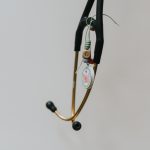Share
Celebrating one year of physician assistant regulation in Alberta: part two
Back to MessengerRead time: 3 minutes
In last month’s edition of The Messenger, we shared more about the role of physician assistants (PAs) in Alberta’s healthcare system and how regulation has impacted the profession as a whole. This month, we’ll hear more from Hannah about how PAs and PA regulation can benefit Albertans.
How can PAs impact the quality of care Albertans receive?
PAs can help improve the efficiency of the healthcare team. We can serve as an extra set of hands to reduce wait times, reduce the length of hospital admissions and help address patient concerns quicker for higher patient satisfaction.
PAs can also improve consistency and continuity of care. In a hospital setting, for example, a PA may look after the same patient for the entirety of their stay, meaning the patient has an extra source of education and advocacy tailored to their needs.
Can you explain if and how the role of a PA changes based on where they’re practising geographically (i.e., in a rural vs. urban setting)?
Similar to physicians, we’re working with a different level of resources and often a different patient population. This also comes with a different set of common medical concerns.
In addition, I think the inner workings of a practice may change quite a bit. For example, a rural family practice may take on more than an urban family practice. This could include delivering babies, triaging patients and providing urgent care. In an urban setting, on the other hand, you might have more specialized resources available and may choose to refer to a different facility or provider. This of course varies greatly between individual practices and the PA’s role would be determined through the collaborative relationship between the PA and the physician.
What are the best qualities an attending physician can display to help build a strong, mutually beneficial and collaborative relationship with a PA?
Having excellent communication is crucial. Additionally, having the opportunity to sit down and identify goals and strategies as a team is extremely helpful. If the overall goal is to have a PA who is very highly trained and can do much of what the supervising physician can do, the physician-PA team requires investment in time and training. Of course, this can benefit the entire team and the patients it serves.
Do you think being in such a broad role helps in terms of the care you provide in all areas?
It’s very individual, but I think our broad role can help break down some of the silos of medicine and allow for a new perspective. Gaining knowledge is always a plus.
What’s your favourite thing about being a PA?
I value being able to walk alongside patients in their care. I love the way the profession emerged from a need for continuity, filling gaps and breaking through some of the barriers that exist in health care—for instance, getting more practitioners to remote rural areas or helping to shorten patient wait times. I also appreciate always having a mentor, my supervising physician, whose expertise I can draw upon to ensure high quality patient care.
The flexibility of the role is a neat piece, too. For example, I have several colleagues who split their time working in two different specialities; we have the professional capacity to move laterally and explore different aspects of patient care.
Where can physicians go if they’re looking for more information or they want to contact a PA?
Physicians who are interested in connecting with PAs can reach out through the Canadian Association of Physician Assistants (CAPA), through the CAPA Alberta representative or through PAs they meet (we’re quite well connected and most are happy to help).




















Comments for this post are now closed. If you would like to share your feedback on this topic, please email support@cpsa.ca.